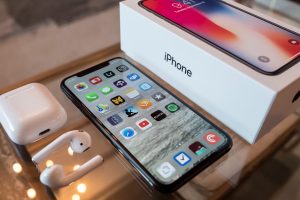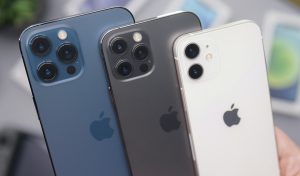Mobile Phones
A mobile phone, often referred to as a cell phone or smartphone, is a portable electronic device that allows users to make and receive calls, send text messages, access the internet, and run various applications. Mobile phones have become an indispensable part of our daily lives, keeping us connected to the world around us. These devices come in various shapes, sizes, and operating systems, offering a wide range of features and capabilities. From basic functionality to advanced features, mobile phones have evolved over the years, providing us with the convenience of communication, entertainment, and productivity on the go. With technological advancements, today’s mobile phones boast powerful processors, high-resolution displays, multi-camera setups, ample storage options, and long-lasting battery life.
A Brief History of Mobile Phones
Mobile phones, a technology that has revolutionized the way we communicate, have come a long way since their inception. The history of mobile phones began in the early 1970s when the concept of a portable cellular telephone system was first introduced. However, it was not until the 1980s that the first truly mobile phone was developed.
The introduction of the Motorola DynaTAC 8000X in 1983 marked a significant milestone in the history of mobile phones. Weighing over 2 pounds and with a price tag of $3,995, it was far from the sleek and compact devices we know today. Despite its limitations, it paved the way for further advancements.
The development of cellular networks played a crucial role in the evolution of mobile phones. The introduction of the first commercial cellular network in Japan in 1979 and the subsequent establishment of various networks around the world allowed for wider accessibility and adoption of mobile phones.
Over the years, mobile technology has advanced by leaps and bounds. From the introduction of text messaging in the 1990s to the advent of mobile internet in the early 2000s, each decade brought innovations. Today, mobile phones are not just communication devices, but also tools for entertainment, productivity, and much more.
The history of mobile phones is a testament to human ingenuity and the constant pursuit of improvement. As cellular networks became faster and more reliable, mobile phones evolved into the powerful devices we rely on daily. From basic feature phones to smartphones with cutting-edge technology, the mobile phone industry has come a long way, and its evolution shows no signs of stopping.
Android Phones
Android phones have become a dominant force in the mobile phone market, offering a wide range of options and features to cater to all types of users. With various manufacturers like Samsung, Google, and OnePlus competing in this space, consumers have a plethora of choices when it comes to Android devices. One of the key advantages of Android phones is the flexibility and customization they offer, allowing users to personalize their devices to suit their preferences. Additionally, Android phones often offer larger screens, advanced camera capabilities, and longer battery life compared to some other smartphone options. With the Google Play Store providing access to a vast array of apps and the integration of Google Assistant and Google Drive, Android phones provide users with a seamless and intuitive experience. Whether you’re a power user or simply looking for a reliable mobile device, Android phones have established themselves as a top contender in the mobile phone industry.
Features of Android Phones
Android phones offer a wide range of features and functionalities that make them a popular choice among smartphone users. One of the key features of Android phones is their customizable interfaces. Users can personalize their home screens, app icons, and overall look and feel of their device to suit their preferences.
Another notable feature is the access to the Google Play Store, which provides a vast selection of apps for download. With millions of apps available, users can find and utilize various tools, games, and entertainment options to enhance their smartphone experience.
Android phones also offer diverse device options from various manufacturers, giving users the flexibility to choose a phone that meets their specific needs and budget. Whether it’s a high-end flagship device or an affordable mid-range phone, there are numerous options available.
Expandable storage is another advantage of Android phones. Many devices offer the option to insert a microSD card, allowing users to store more photos, videos, and apps without worrying about running out of space.
Additionally, Android phones provide customizable notifications and settings. Users can easily customize how they receive alerts and notifications, allowing for a personalized and organized experience.
Android phones offer unique functionalities and capabilities such as customizable interfaces, access to the Google Play Store, diverse device options, expandable storage, and customizable notifications. These features make Android phones a versatile and user-friendly choice for consumers.
Popular Android Devices
When it comes to popular Android devices, there are several standout options currently available in the market. Let’s take a look at some of the top contenders:
1. Samsung Galaxy: Samsung’s Galaxy series has consistently been a top choice for Android enthusiasts. With features like stunning displays, powerful processors, and versatile cameras, devices like the Samsung Galaxy S21 and Galaxy Note 20 offer top-tier performance.
2. Google Pixel: Known for its exceptional camera capabilities and clean user interface, the Google Pixel devices, such as the Pixel 5 and Pixel 4a, are highly regarded among photography enthusiasts. With regular software updates directly from Google, they offer a seamless and pure Android experience.
3. OnePlus: OnePlus devices like the OnePlus 9 Pro and OnePlus 8T have gained a strong following for their flagship-level performance at a more affordable price point. With powerful processors, high refresh rate displays, and fast charging capabilities, these devices deliver a premium Android experience.
4. Xiaomi: Xiaomi has been making waves with its feature-rich and competitively-priced devices. Popular models like the Xiaomi Mi 11 and Mi 11 Pro offer impressive specifications, such as high-resolution displays, powerful processors, and versatile camera setups.
5. Huawei: Despite challenges in the global market, Huawei devices like the Huawei P40 Pro and Mate 40 Pro showcase cutting-edge technology and premium design. With powerful processors, impressive camera systems, and large batteries, these devices cater to power users.
These Android devices from Samsung, Google, OnePlus, Xiaomi, and Huawei offer a range of features and performance options to cater to different user preferences and budgets.
Pros and Cons of Android Devices
Android devices offer a plethora of advantages that make them a popular choice among smartphone users. The key advantage is the wide range of choices available in terms of price, features, and customization options. Whether you’re looking for a budget-friendly option or a high-end flagship device, the Android market has something for everyone. Additionally, Android devices offer a more open ecosystem that allows users to customize their devices with third-party apps and widgets, creating a personalized experience.
However, there are also some disadvantages to consider when opting for an Android device. One of the main drawbacks is the slower software updates compared to other smartphone options. While Google provides regular updates, it can take some time for these updates to reach all Android devices due to the numerous manufacturers and models on the market. Another downside is the less seamless integration with other Apple devices. If you’re heavily invested in the Apple ecosystem, such as owning an iPhone, iPad, or MacBook, an Android device may not offer the same level of integration and synchronization.
When evaluating Android devices, it’s important to consider key factors such as battery life, performance, camera quality, software experience, and customer support. Look for devices with long-lasting battery life, powerful processors, and high-quality cameras to fit your needs. Additionally, consider the user interface and software experience offered by different Android manufacturers. Finally, evaluate the customer support provided by the manufacturer, as prompt and reliable support can greatly enhance the overall experience.
Apple iPhones
Apple iPhones are known for their sleek design, advanced features, and seamless integration with other Apple devices. These smartphones have become a symbol of sophistication and innovation in the tech industry. With each generation, Apple continues to push the limits of what a smartphone can do, offering superior performance, cutting-edge technology, and an intuitive user experience. From the latest iPhone 14 to the budget-friendly iPhone SE, Apple offers a range of options to suit different needs and budgets. In this article, we will explore the key features and advantages of Apple iPhones, as well as some considerations to keep in mind when choosing one as your next mobile device.
Features of iPhones
iPhones are renowned for their exceptional features, making them a top choice among users. The iPhone features an advanced operating system, iOS, which provides a seamless and user-friendly experience. iOS offers a secure ecosystem and regular updates to enhance performance and introduce new features.
When it comes to camera quality, iPhones excel with their impressive lens technology and image processing capabilities. The cameras capture stunning photos and videos, allowing users to unleash their creativity. With features like Night mode, Portrait mode, and Deep Fusion, iPhone cameras guarantee exceptional results in any lighting condition.
Storage options on iPhones range from ample to generous, ensuring users can store all their files, photos, and videos without worrying about running out of space. Additionally, iPhones use the latest display technology, providing vivid colors, sharp details, and great viewing angles.
Notable features of iPhones include Face ID, a secure and convenient way to unlock the device and authenticate purchases. Apple Pay allows users to make payments securely, while wireless charging eliminates the hassles of tangled cables. Moreover, iPhones seamlessly integrate with other Apple devices, enabling effortless file sharing, and syncing, and creating a holistic ecosystem.
Popular iPhone Models
The iPhone has seen numerous generations and variations since its initial release in 2007. Here’s an overview of some popular iPhone models:
1. iPhone 3G/3GS: The second-generation iPhone introduced cellular data capabilities and a faster processor. The 3GS model offered improved performance and a higher-resolution camera.
2. iPhone 4/4S: The iPhone 4 featured a sleek glass design and introduced the Retina display. The 4S added Siri, a voice-activated virtual assistant.
3. iPhone 5/5s/5c: The iPhone 5 featured a larger screen and a thinner design. The 5s introduced Touch ID fingerprint recognition, while the 5c offered a more affordable option with colorful plastic casings.
4. iPhone 6/6 Plus: These models introduced larger screens and a more rounded design. The 6 Plus included optical image stabilization for improved camera performance.
5. iPhone 7/7 Plus: The iPhone 7 removed the headphone jack and introduced water resistance. The 7 Plus introduced a dual-camera system for enhanced photography capabilities.
6. iPhone 8/8 Plus: The iPhone 8 models featured wireless charging, improved cameras, and a faster processor.
7. iPhone X/XR/XS/XS Max: The iPhone X marked a significant design change with an edge-to-edge OLED display and Face ID facial recognition. The XR offered a more affordable option with colorful casings, while the XS and XS Max featured improved cameras and processing power.
8. iPhone 11/11 Pro/11 Pro Max: These models introduced improved cameras, including a Night mode and an ultra-wide lens. They also featured the powerful A13 Bionic chip.
9. iPhone 12/12 mini/12 Pro/12 Pro Max: The iPhone 12 series brought a new design with flat edges, 5G capability, and improved cameras. The Pro models offered advanced camera features and LiDAR scanning technology.
Each iPhone generation and variation has brought key features and improvements, constantly pushing the boundaries of technology and user experience.
Pros and Cons of iPhones
When it comes to mobile phones, iPhones have long been considered a premium choice. Here, we’ll discuss the pros and cons of iPhones compared to other mobile phones.
Advantages:
1. Design: iPhones are known for their sleek and elegant design. With premium materials and attention to detail, they offer a sophisticated look and feel.
2. User experience: iOS, the operating system on iPhones, is renowned for its simplicity and ease of use. Its intuitive interface makes it effortless to navigate and interact with apps.
3. Ecosystem: iPhones seamlessly integrate with other Apple devices, such as Macs and iPads. This ecosystem allows for seamless synchronization and sharing of data across devices.
4. App Store: The Apple App Store offers a vast selection of high-quality apps and games, often optimized specifically for iPhones.
5. Customer support: Apple is known for its excellent customer service and support, with Apple Stores and online resources readily available for assistance.
Disadvantages:
1. Price: iPhones tend to be more expensive compared to other mobile phones, especially the latest models. The high price point can make them less accessible for budget-conscious consumers.
2. Closed ecosystem: While the Apple ecosystem offers integration benefits, it also means limited customization and software options compared to Android devices.
3. Limited hardware choices: Unlike the vast range of Android phones available, iPhones offer a limited choice of models, screen sizes, and features.
4. Battery life: While recent iPhone models have made improvements, battery life can still be a concern for power users or those who heavily rely on their devices.
5. Pricey repairs: Apple’s repair and replacement services can be costly, especially if the device is out of warranty or has accidental damage.
Ultimately, the decision to choose an iPhone depends on personal preference and priorities. iPhones excel in design, user experience, and ecosystem integration, but they come with a higher price tag and limited customization options. It’s essential to weigh these pros and cons to make an informed choice.
Power Users: Who Needs the Best Phone?
When it comes to mobile phones, there is a category of users known as power users who have specific needs and requirements. Power users are individuals who heavily rely on their devices for various tasks such as gaming, multimedia consumption, multitasking, and productivity. For these individuals, having the best phone is crucial as it can ensure optimal performance, efficiency, and a seamless user experience. Power users often demand smartphones with top-of-the-line processors, massive screens, ample storage, exceptional battery life, and advanced camera capabilities. They require devices that can handle resource-intensive apps and tasks without any lag or performance issues. The best phone for power users would be one that excels in all these aspects, providing a combination of power, responsiveness, and versatility to meet their demanding requirements. Whether it’s for professional use or personal entertainment, power users need a device that can keep up with their fast-paced and tech-savvy lifestyle.
Midrange Phones vs. High-End Phones
Midrange phones strike a balance between cost and functionality. They offer decent features and performance at a more affordable price point compared to their high-end counterparts. While they may not have the latest cutting-edge technologies and premium specifications, midrange phones still provide a solid user experience for everyday tasks such as browsing the web, social media, and casual gaming.
On the other hand, high-end phones are positioned at the top of the market, boasting state-of-the-art features, top-notch performance, and luxurious build quality. These devices showcase the latest advancements in technology and often have additional features like water resistance, multiple rear cameras, and larger battery capacities. High-end phones are designed for power users and those who demand the best in terms of performance, camera capabilities, and overall user experience.
When choosing between a midrange phone or a high-end phone, personal preference plays a crucial role. Some individuals prioritize having the latest technologies and are willing to invest in a high-end phone, while others are satisfied with the more affordable yet functional features offered by midrange devices.
Current Smartphone Trends
Smartphones have become an essential part of our everyday lives, and as technology continues to advance, so do the trends surrounding these devices. From innovations in battery life to advancements in photography capabilities, the latest smartphone trends are shaping the way we use our mobile devices. Whether you’re a tech enthusiast or just looking for a new phone, staying informed about these trends can help you make the best choice for your needs. In this article, we’ll take a closer look at some of the current smartphone trends that are making waves in the mobile industry.
Best-Selling Smartphone Models
When it comes to best-selling smartphone models, there are a few standout options that dominate the market due to their key features and popularity. One such model is the iPhone SE from Apple. Despite being a more budget-friendly option, it offers many of the features found in higher-end iPhones, including a powerful A13 Bionic chip, a compact design, and a great rear camera. The iPhone SE appeals to both Apple enthusiasts looking for a more affordable option and new smartphone users.
Another popular choice is the Samsung Galaxy S22 Ultra. Known for its massive screen, impressive battery life, and water resistance, this Android device caters to power users who crave top-notch performance. Its dynamic display, multiple rear cameras, and extra features like an integrated stylus set it apart from other smartphones in the market.
These models have gained a significant market share due to their reputation for reliability, performance, and the support of established app stores like Apple’s App Store and Google’s Play Store. The combination of innovative technology, brand loyalty, and strategic marketing has propelled these smartphones to the forefront of the industry. With their impressive capabilities and wide range of features, it’s no wonder that these best-selling smartphone models continue to capture the attention of consumers worldwide.
Conclusion
In conclusion, the choice between mobile phones and iPhones depends on personal preferences, with Android devices offering more customization options and iPhones providing a streamlined ecosystem. Both options have their pros and cons, ensuring that users can find a device that meets their specific needs.







